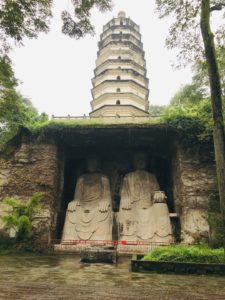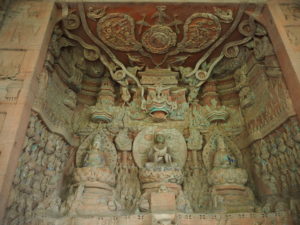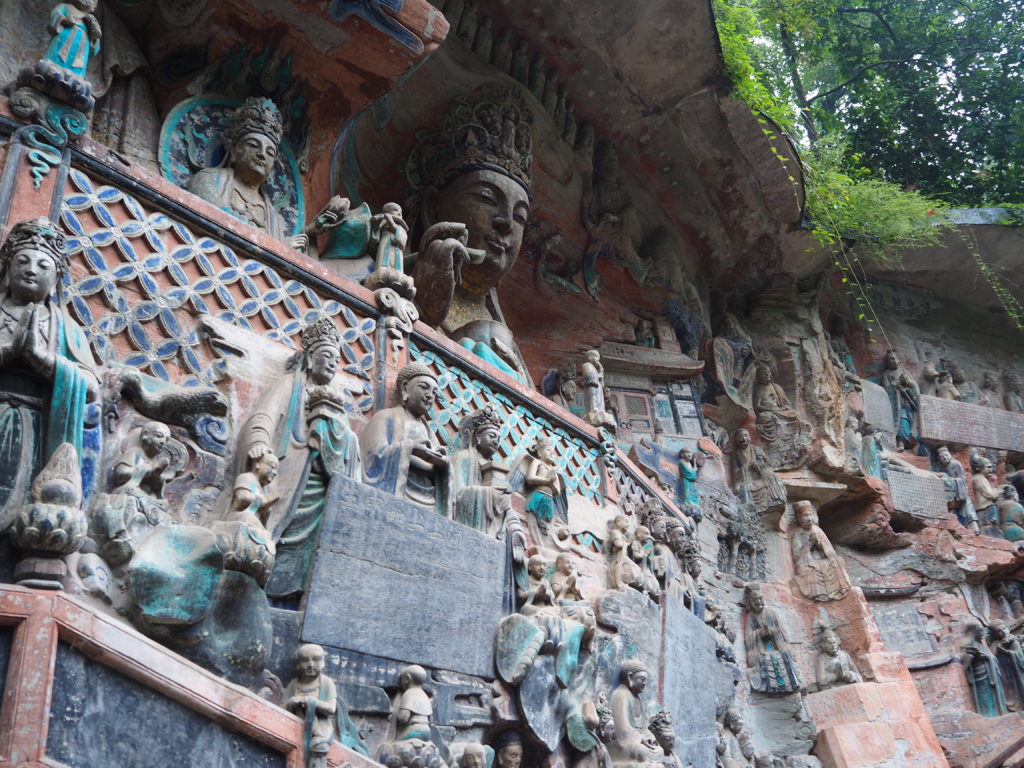Visiting the Dazu Buddhist Caves from Chongqing
Why Dazu?
Along with the Longmen Grottoes (龙门石窟) in Luoyang, the Yungang Grottoes (云冈石窟) in Datong and the Mogao Grottoes (莫高石窟) in Dunhuang the Dazu rock carvings (大足石刻) outside of Chongqing make up China’s four most prominent sites of buddhist art.
Of the 4, Dazu is probably the least visited, in part due to the fact that Chongqing itself is quite isolated from other popular travel areas in China. Also it is a long journey from the city itself. The vast majority of visitors will take a private tour. However it is quite easy to take use a combination of public transport and taxis to visit the site for a fraction of the cost.
The carvings are about 160km west of Chongqing, one of China’s most impressive metropolises. They surround the town of Dazu (大足) across 5 sites. The biggest and most popular being Baoding Shan (宝顶山) and Bei Shan (北山) which are easily accessible from the town of Dazu. The three remaining sites of Nan Shan (南山) Shizhuan Shan (石篆山) and Shimen Shan (石门山) are much smaller and generally in poorer condition. In the case of the latter two are quite far from Dazu itself, making transport an issue.
One option is to stay in Dazu itself, giving you time to see all 5 sites. When we visited on a day trip form Chongqing we were able to visit Baoding Shan and Bei Shan. We would not have had time to visit any others.
The carvings date from the the 9th to 13th centuries at a time of great upheaval in ancient China. During this time the Tang dynasty collapsed and was replaced by the Song dynasty, which then separated into the Northern and Southern Song dynasties. These were then replaced by the Yuan dynasty in 1271. This has lead to a huge variety of influences in the carvings and artwork. Alongside buddhism there are a number of carvings related to Taoism, Daoism and Confucian ideas.
How to get there
There are numerous bus stations in Chongqing that will get out to Dazu. However we found the bus station at longtousi (龙头寺) had the most frequent services. To get to Longtousi take line 3 and get off at Chongqing North station (beizhan) south square (重庆北站南广场). From here, take exit 1 and head west towards Longtousi bus station (龙头寺长途汽车站). Once you get in, there is very limited English signage. Do not expect any of the attendants and ticket sellers to speak English either.
We took the 8:10 bus to Dazu (大足). We would recommend going on a weekday and getting to the bus station 45 minutes early to make sure you can get a seat. You will be allocated seat numbers that will be displayed on your ticket. Unusually this seat numbering system is followed quite strictly. Expect the journey to Dazu to take just under 2 hours.
You need to get off at the last stop which is Dazu bus station. When you get there follow the signs to bus 205. However before you leave the bus station buy your return bus ticket to Chongqing. You don’t want to get back and find out that there are no more seats. The last bus leaves at 6pm, but before that there are buses that go at 3pm and 4pm. However you would not have enough time to visit both Baoding Shan and Bei Shan.
Upon exiting the bus station, cross the road and turn right and you will see a bus stop, probably with a number of buses waiting. It is here that you can jump on the 205. This bus will take you to Baoding Shan. You can either get off at Baoding Shan Museum (宝顶山博物馆) which is the penultimate stop or wait until Baoding Shan police station (宝顶山派出所). From here head to the entrance, which is clearly labelled in English. You can buy a ticket for just Baoding Shan or combined ticket for Baoding Shan and Bei Shan which will cost 140rmb and save 45rmb.
Getting from Boading Shan to Bei Shan
At the exit of Baoding Shan get on the 205 at the police station and get off at dian xin ju (电信局). This is the best place to pick up a taxi to Beishan. It should cost around 10rmb. We used China’s ride hailing app Didi (滴滴出行) to get a taxi, however there are plenty of taxis on the street.
Getting back into Dazu we used the same app. However there were no taxis waiting around at Beishan so getting back could be tricky. You have 3 options: the first is to ask staff at Bei Shan to help you call a taxi, walk down the hill and hail a taxi there or catch the 105 from the TCM hospital (区中医院). Alternatively you could arrange with the taxi driver who dropped you off a time to pick you up again. To get back to the bus station expect to pay between 10-15rmb.
What to see at Baoding Shan
The main site here is obviously the stunning carvings themselves. These carvings a some of the best preserved in China. This is largely due to fact that they were only discovered in 1945. Also during the time of the cultural revolution the sites were only accessible by a mud path meaning they avoided the destructive hordes of red guards who were destroying the 4 olds all over China. As you might expect this site is the busiest of the 5. It’s better to get hear early to avoid the tour buses that come later in the day.
Follow the exit signs that lead you up the stairs and this will bring you to the stunning and surprisingly deserted Sheng Shou temple. From here it’s a short walk to the Baoding Shan police station (宝顶山派出所) where you can hop on bus number 205 and head back in the Dazu city to grab something to eat and catch a taxi to Beishan

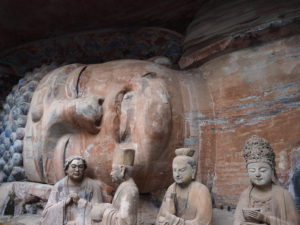
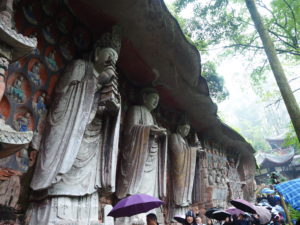
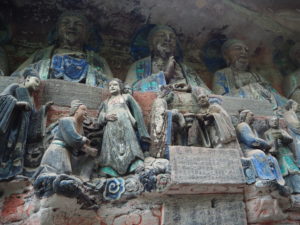
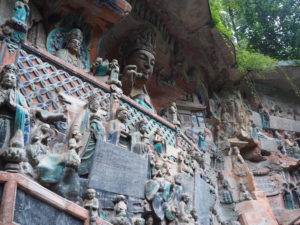
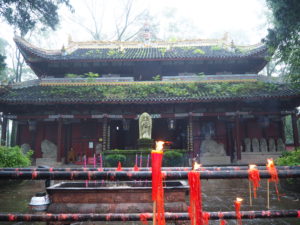
What to see at Bei Shan
Located far closer to Dazu city centre than Baoding Shan the carvings here are not quite a spectacular as Baoding Shan, however the contrast in styles and colours is certainly very interesting. There are far fewer people than at Baoding Shan which is certainly a pleasant change. There is a also a rather stunning pagoda on the far side of the site. Like Baoding Shan the carvings here were hidden away from the marauding red guards during the cultural revolution.
